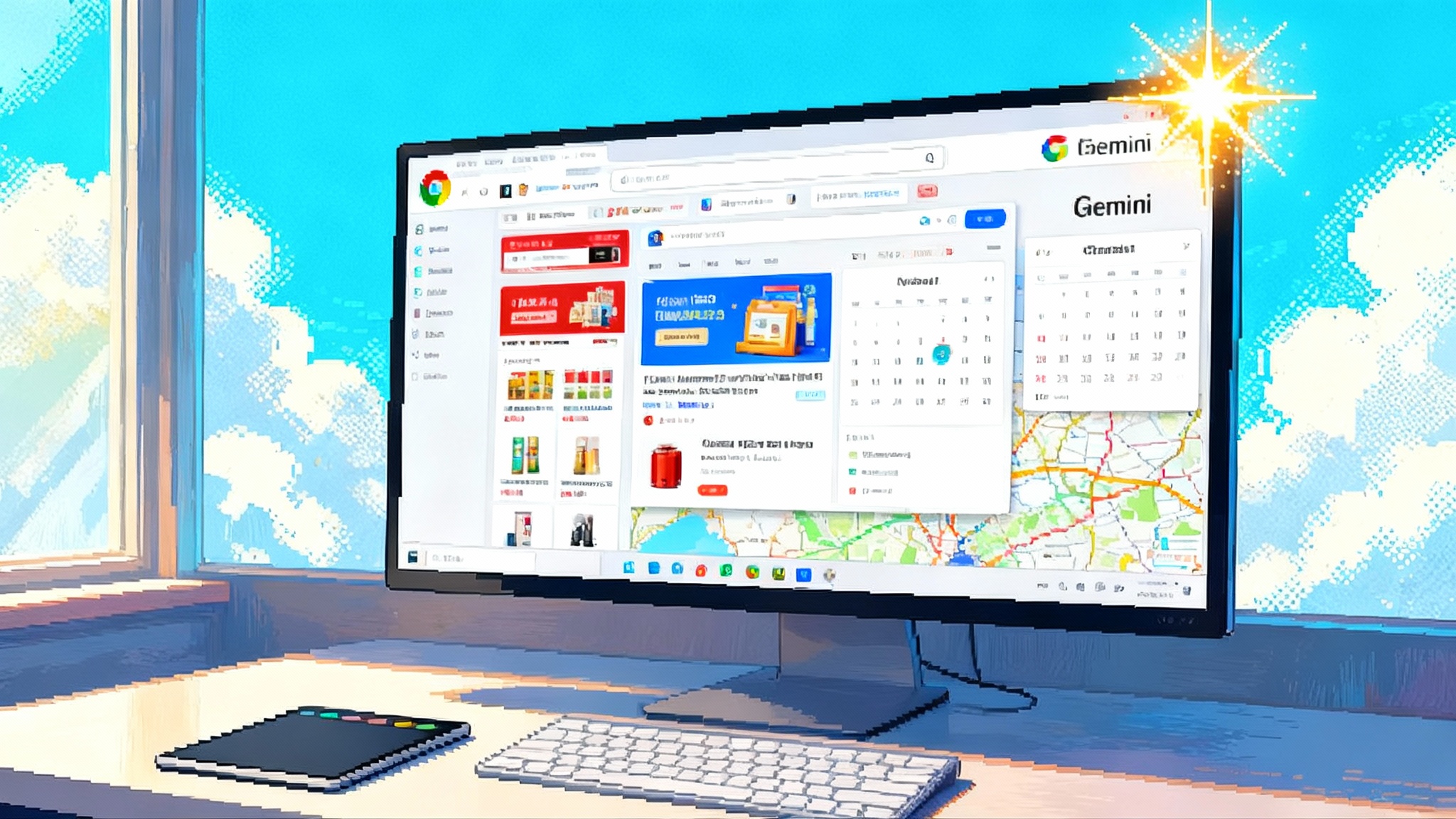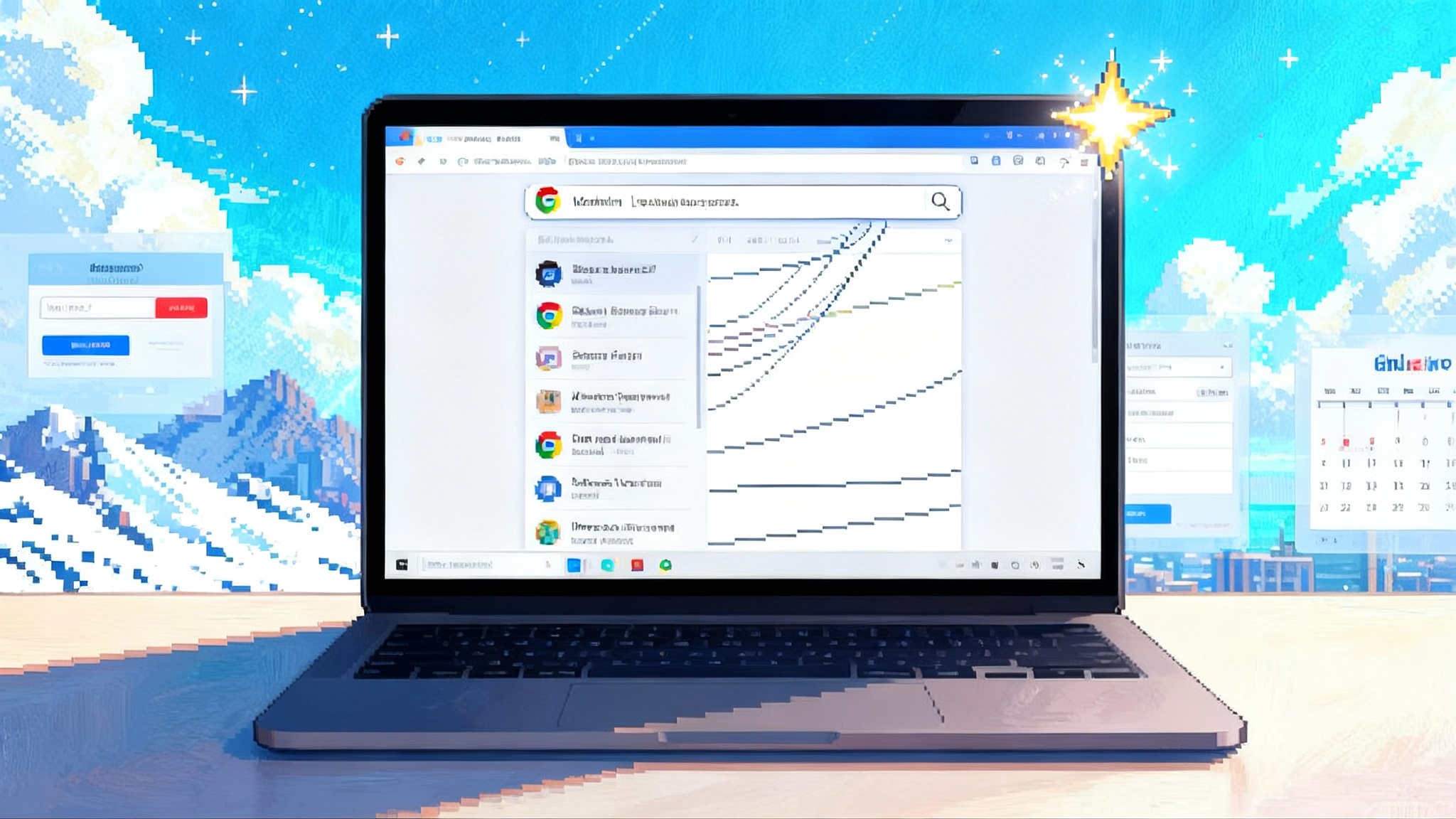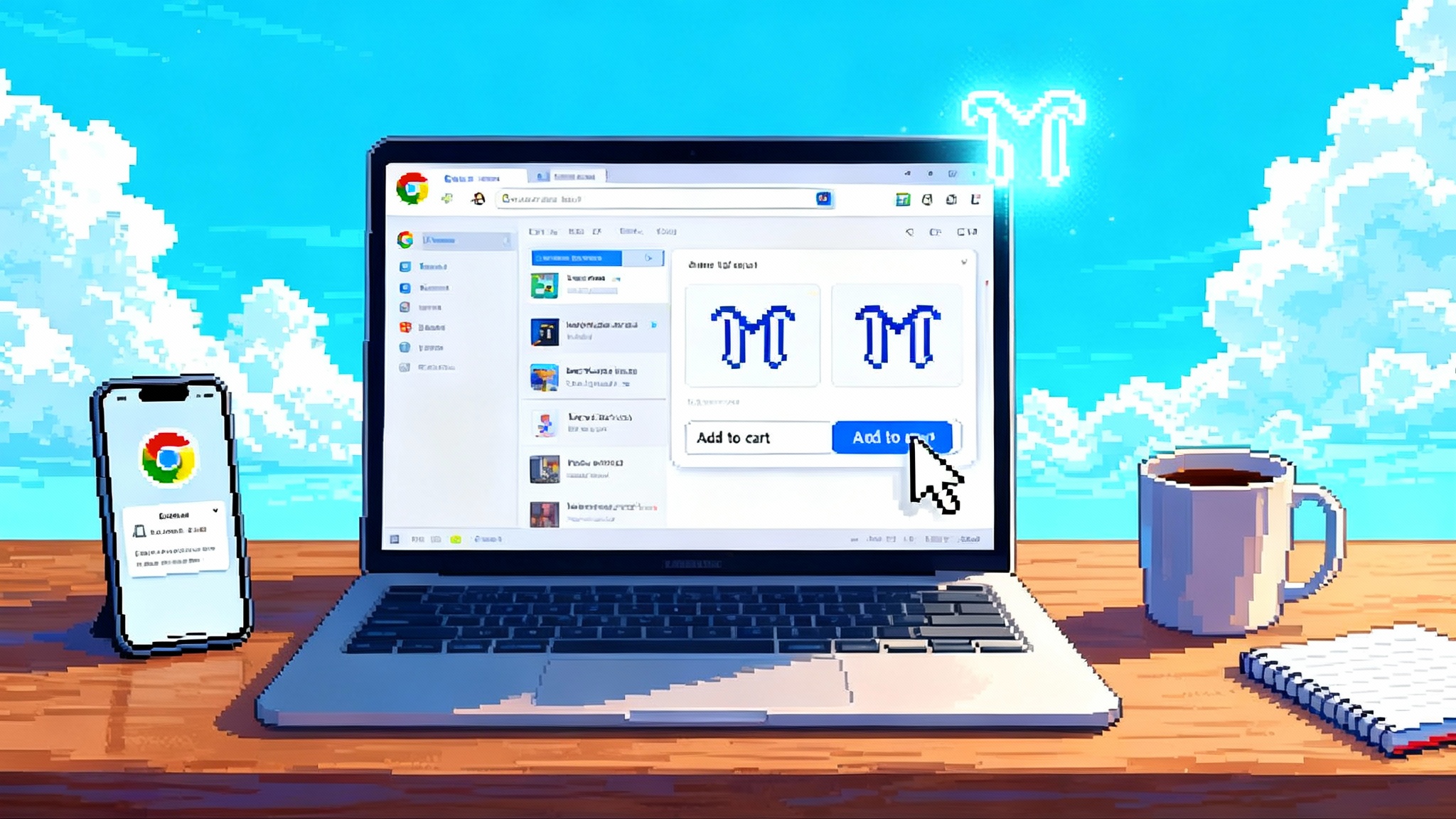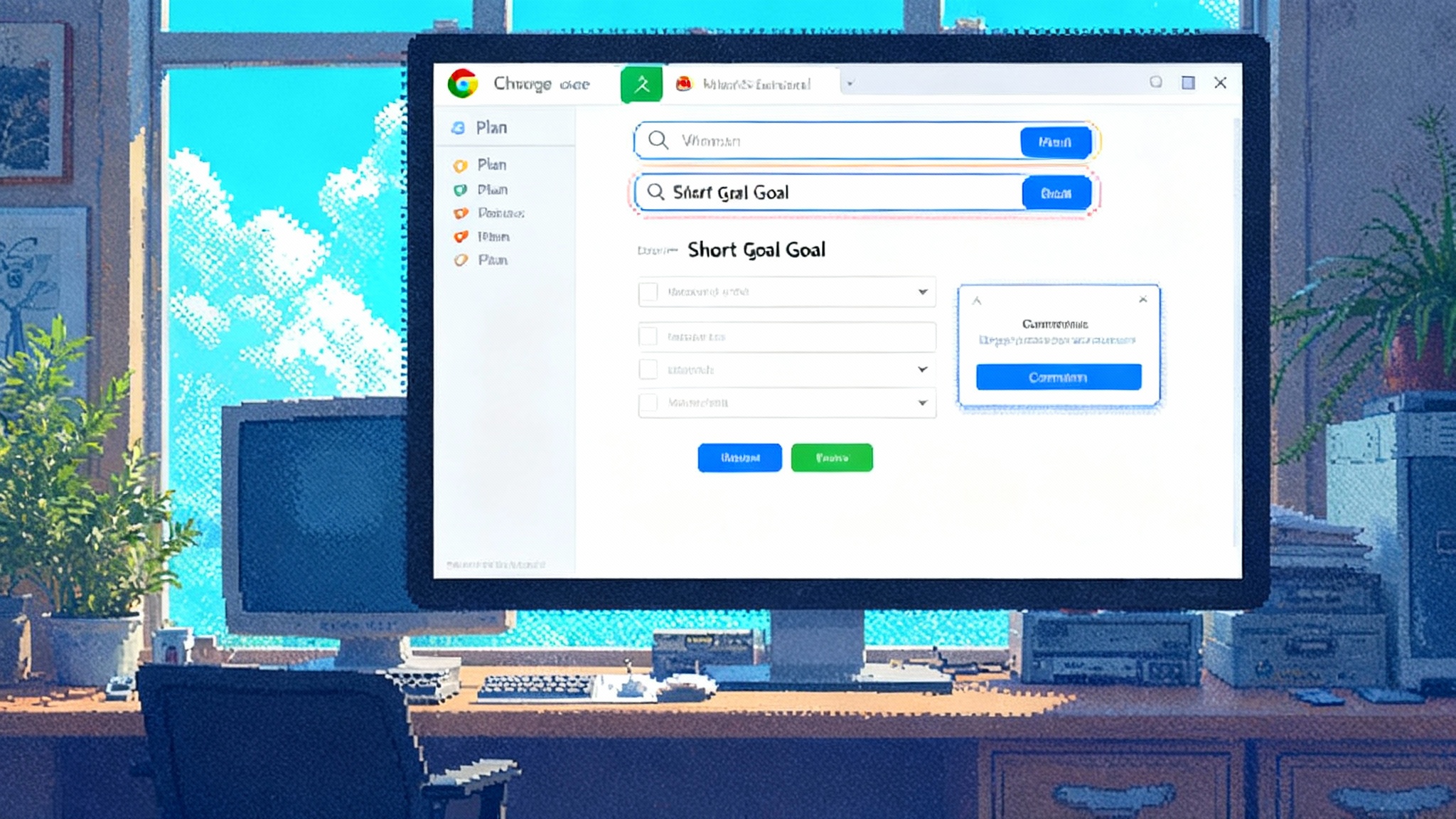Gemini in Chrome Turns the Browser Into an Agent Runtime
As of September 18, 2025, Google began rolling out Gemini inside Chrome to U.S. desktop users, shifting everyday browsing from searching and clicking to asking and delegating. Here is how agentic browsing will reshape product design, SEO, e-commerce, security, and platform power.

The browser just became an agent runtime
On September 18, 2025, Google began rolling out Gemini inside Chrome to U.S. desktop users. The headline is simple: your default browser can now understand pages, juggle tabs, and act on your behalf with built-in guardrails. It is no longer just a viewport. It is a task runner that reads, reasons, and clicks. Google frames it as an evolution of the omnibox and side panel in Chrome reimagined with AI. For competitive context, see our take on Chrome’s Gemini gambit and how a Gemini-in-Chrome agent platform changes developer incentives.
This matters because UI is destiny. When agentic AI climbs into the mainstream UI layer, the default habit shifts from searching and clicking to asking and delegating. Chrome is positioning itself as an operating environment for agents, complete with context access, confirmation flows, and new safety rails.
What agentic browsing looks like
Agentic browsing is not a single feature. It is a pattern where the browser becomes a co-pilot for tasks that span multiple pages and services. The user sets a goal. The agent assembles steps, reads pages, fills forms, and asks for confirmation before actions that have consequences.
A few concrete patterns you will see in Chrome and competitors:
- Tab-level context. The agent can read across the tabs you choose to share, summarize differences, and keep state so you can switch goals without losing progress.
- Ask to act. The agent proposes a plan, shows the steps, and seeks your approval to proceed. It uses visible confirmation for anything with money, messages, or identity.
- Inline tool switching. The agent jumps between reading, extracting details, and taking small actions without you copying anything. It calls out when it needs you to enter credentials or two-factor codes.
- Progressive autonomy. The agent handles low-risk steps automatically and stops for anything that changes accounts, payment, or privacy state.
Under the hood it is a runtime that maps goals to page structures, applies policy, and writes to the DOM like a careful robot.
Product design implications
Design for delegation, not just discovery. If an agent is the primary consumer of your UI, your product has two audiences: the human who approves and the agent that reads, plans, and executes. Build affordances that work for both.
1) Structure your actions, not just your content
- Make key actions easy to identify. Button labels should be specific, stable, and unique on the page.
- Provide machine-readable endpoints for core tasks. Back quote, book, reserve, subscribe, or reorder with clean URLs or APIs that accept predictable parameters. Agents prefer idempotent operations and explicit side effects.
- Publish intent hints. Surface modals and multi-step flows with attributes or data tags that describe the action, required inputs, and expected outcomes.
2) Confirm like a pilot checklist
- Show a compact, itemized review before payment, scheduling, or submission. Display total cost, taxes, fees, refund window, dates, address, and contact.
- Require a single clear confirm. Avoid hidden second confirms.
- Make failure legible. Return a plain error reason and a next best step.
3) Keep state visible and resumable
- Expose cart, selection, and filters as query parameters or readable DOM state.
- Offer a return token or deep link that recreates an in-progress flow.
4) Plan for shared control
- Expect the user to take over. Provide a visible switch to manual at any step.
- Respect friction by default. Sensitive actions should always require user-visible approval in the browser.
SEO in an agent world
SEO has long matched queries to pages. Agentic browsing tilts the field toward task completion. The new questions are:
- Can an agent extract the structured facts and options it needs from your page without scraping hacks or guesswork?
- Do your pages expose clear constraints like eligibility, inventory windows, delivery areas, or calendar availability?
- When the agent compares options, are tradeoffs legible and machine-digestible?
Practical steps:
- Keep your HTML semantic. Use clear headings, lists, tables, and labels.
- Use structured data where it exists for products, prices, events, and reviews. Avoid invented markup that only your script understands.
- Separate editorial persuasion from operational facts. Put price, fees, time, quantity, and policies in predictable locations.
- Publish lightweight comparison endpoints. A simple JSON response for price by variant or earliest available slot gives agents the facts to reason quickly.
Ranking will bend toward outcome quality. If an agent learns that users complete faster and refund less when it chooses your site, that behavior will stick.
E-commerce flows that work for agents
Agents excel at tedious multi-step tasks. That is the core of online shopping. To become agent-friendly commerce, focus on:
- Stable carts and canonical SKUs. Use durable identifiers to add, remove, or modify items without surprises.
- Itemized totals. Show line items, taxes, shipping, and fees in the same place every time.
- Quote first. Provide a quote endpoint that returns a commitment-free total with expiration time and constraints.
- Clear policy surfaces. Expose return windows, restocking fees, and cancellation rules near confirmation.
- Tokenized payments. Support standard wallets and one-time tokens so the agent never handles raw card numbers.
- Post-purchase hooks. Provide order status endpoints and simple cancellation paths.
Security and consent patterns you will need
Agentic browsing raises new trust boundaries. Your site will interact with a browser-resident agent that is acting as the user. You want actions to be safe, consented, and auditable.
- Scope the agent per site. Treat the browser agent like a delegated user. Use normal web auth and scoped tokens. Never rely on DOM obscurity to hide sensitive paths.
- Confirmation must be user visible. For anything with money, identity, or messaging, require a browser-level confirm the user sees and approves. Plan the copy for that confirm screen.
- Minimize data sharing. Only provide the facts the agent needs for the requested step. Assume anything in the client can be read.
- Defend against prompt injection. Treat all page content as untrusted input. Sanitize user-generated text and strip patterns that could steer the agent.
- Add content boundaries. If you show untrusted content near sensitive controls, separate them in the DOM and use clear ARIA roles.
- Use security headers. Enforce CSP, X-Frame-Options, and COOP where relevant.
- Build an audit trail. Log agent-initiated actions with a flag so users and support teams can review what was done, when, and why.
You do not need new security inventions to start. Apply the best parts of web security with the mental model that a careful robot is clicking your UI.
Browser and platform power dynamics
Embedding an agent into the default browser tilts the map. Browsers have always been gateways to discovery and transactions. Now they are planners and operators.
- Default agent advantage. The agent that ships with the browser will see more tasks than any third party.
- Search to action. If the browser agent is good at finishing tasks, it can intercept some navigations before they reach search.
- App boundary shifts. With agent assistance, the browser feels more like an OS shell for web tasks.
- Enterprise control points. Admin toggles and policies for agent features will influence which ecosystems win inside companies.
We unpack the broader agentic browsing economics and why outcome quality will be the key ranking signal.
How it compares: Operator and Copilot in Edge
-
OpenAI Operator. Operator runs in a cloud-hosted environment with a built-in browser that learns to use buttons and forms the way a person would. It asks for confirmation before any action with external impact, and it continues to evolve within the broader ChatGPT product. For details on its confirmation model and rollout history, see the Operator release notes.
-
Copilot in Edge. Copilot has lived in the Edge sidebar, reading the current page, summarizing, and helping compose. Microsoft has added hooks into shopping and work accounts, and it can act inside some Microsoft-owned surfaces with tight policy. In most cases, it still behaves more like a powerful reader and writer than a full cross-site operator.
-
Gemini in Chrome. By living inside the default browser, Gemini’s upside is distribution and context. It can see the tabs you share, blend reading and acting, and lean on Chrome’s permission prompts. That makes agentic patterns routine for everyone, not just power users.
These approaches will converge toward more autonomy on low-risk steps, clearer confirmation for risky ones, and richer consent policies.
An agent-ready web checklist
Use this checklist to prepare your site for agentic browsing. Treat it as a crisp contract between the browser agent and the human who approves its work.
1) Structured actions
- Unique, descriptive button labels for each action.
- Stable deep links for add to cart, reserve, subscribe, and cancel.
- Lightweight JSON endpoints for quotes, availability, and totals, including expiration and constraints.
- Semantic HTML around forms with aligned labels and error text.
2) Confirmation UX
- Single review screen with itemized totals, taxes, fees, and policies.
- One clear confirm with no hidden second confirms.
- Explicit changes highlighted from plan to final.
- Clear failure reasons and next steps.
3) Anti prompt injection hygiene
- Sanitize user-generated content, removing or escaping instruction-like patterns.
- Separate untrusted content from sensitive controls in the DOM.
- Avoid hidden text or invisible instructions in templates.
- Treat scraped or embedded external text as hostile until parsed and filtered.
4) Telemetry and consent
- Flag and log agent-initiated actions with timestamps and action types.
- Provide user-facing history and revoke controls for undo or cancel.
- Short retention windows for agent logs by default with clear disclosure.
- Admin toggles for enterprise deployment.
5) Checkout and paywall instrumentation
- Itemized totals in consistent DOM locations without dynamic surprises.
- Quote endpoints that return totals without committing inventory.
- Tokenized payments or standard wallets, never raw card data.
- Simple post-purchase endpoints for status, cancellation, and returns.
- Paywall previews that expose value, exact price, trial terms, and renewal facts in the same block.
The takeaway
The browser is now an agent runtime. That move turns millions of daily tasks into delegations that can be measured and improved. If your site exposes clean actions, confirms clearly, and defends sensibly, agents will favor you because users complete more with less friction. If you hide facts or tangle flows, agents will stall and users will bounce.
Do the boring work. Structure your actions. Confirm like a pilot. Sanitize inputs. Log with consent. Instrument checkout and paywalls. The reward is simple: in an agentic web, the sites that help the browser help the user will win.








